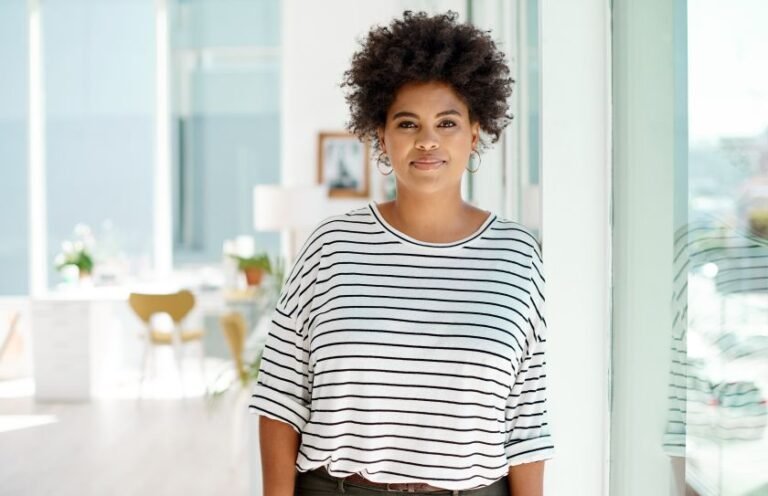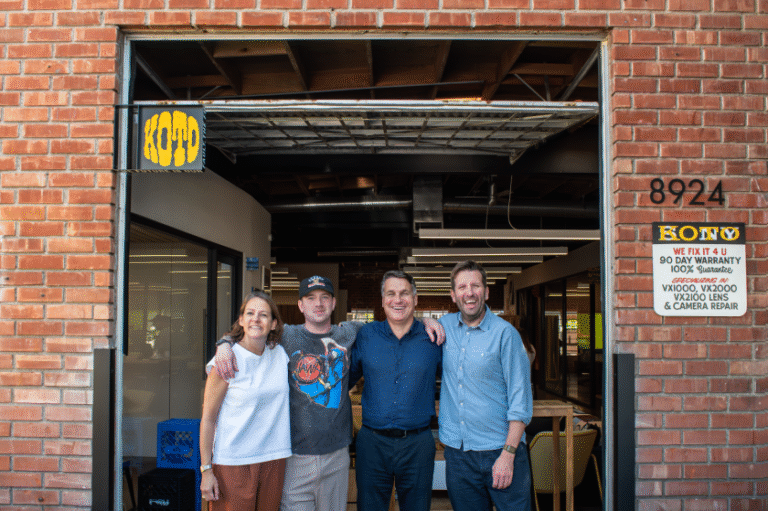

Designer Yinka Ilori aims to address the urgent decline in outdoor play, starting in Nigeria and then spreading across the planet.
The design of play is a topic that doesn’t get much attention. But it’s actually one of the spaces where the most exciting and radical things are happening right now. Take Cas Holman, whose open-ended building systems reject the idea that toys should tell you exactly how to play with them. Or Meghan Athavale, who uses projection technology to turn floors and walls into interactive playable surfaces.
These designers are fundamentally rethinking how we approach play, creativity and learning. Now, Yinka Ilori is not just adding his voice to this movement, but building permanent infrastructure for it. The British-Nigerian artist and designer has announced the launch of the Yinka Ilori Foundation, a non-profit dedicated to creating permanent community spaces built around play, joy and co-creation.
The timing matters: recent research from the University of Exeter shows that one in three UK children no longer play outdoors after school, despite strong evidence that outdoor play strengthens emotional development, social skills and relationships.
For anyone who’s followed Ilori’s journey from furniture designer to international artist, this marks a significant shift. He’s taking his distinctive visual language and turning it into something more lasting than individual commissions or temporary installations.
Building with communities, not just for them
Yinka’s colourful public installations—bus stops, basketball courts, playground installations—have become recognisable across urban spaces. The Foundation represents a move beyond these temporary interventions toward something more permanent.
The first flagship site opens in Nigeria in 2026, featuring modular play structures co-built with local residents. But it’s not just about the physical structures.
Each site comes with a full year of free programming: workshops in music, craft, storytelling, entrepreneurship and fabrication. Crucially, there’s also training in maintenance and caretaking, so communities can sustain these spaces themselves. It’s recognising that beautiful spaces need ongoing care and investment to avoid neglect.


Photo by Kane Hulse

Photo by Nikk Martin
This approach feels more thoughtful than the usual model of designers parachuting in with solutions. Instead of imposing aesthetic ideas, the Foundation’s model embeds sustainability and local ownership from the start.
“Growing up, play gave me freedom to dream,” Yinka explains. “It allowed me to turn swings into spaceships and everyday places into worlds of possibility.” That connection between imagination and opportunity sits at the heart of the Foundation’s mission.
At a time when the creative industries keep having conversations about access and diversity, this feels like addressing the problem at its roots; investing in the imaginative capacities of young people, particularly in communities that need it most.
Global vision, local focus
The Foundation plans sites across Africa, the United States, the United Kingdom, the Middle East and Asia. Each one will be “uniquely rooted in their local context”, developed with local organisations, artists and educators.
That’s quite a challenge: maintaining a coherent mission while ensuring each site genuinely reflects its community rather than replicating a template. To make it a reality, the board of trustees brings together varied expertise.
It includes fashion designer Wale Adeyemi, founder of EKP Connections; Ellen Port, curator and associate director at Gagosian; Péjú Oshin; and sound artist Peter Adjaye, while broadcaster and author June Sarpong takes on an ambassador role. All in all, it’s an interdisciplinary mix that mirrors Yinka’s own practice across architecture, sculpture, furniture and interior design.
More than aesthetics
What makes this Foundation interesting isn’t just its ambition, but its underlying approach. By choosing his ancestral home of Nigeria for the first site, Yinka sidesteps the problematic dynamics that often play out when Western designers work in African communities. Because ultimately, local knowledge and co-creation aren’t add-ons; they’re fundamental.
Elsewhere, the emphasis on skills training and economic opportunity alongside creative activities demonstrates an understanding that sustainable community spaces must generate cultural and economic value. For designers wondering how their work might extend beyond client projects, this integrated model offers a way to consider it.
There’s a parallel with Cas Holman’s philosophy here. Just as she designs play tools that are open-ended rather than prescriptive, Yinka’s spaces aren’t meant to dictate how communities use them. They provide materials, structure and trust for communities to invent their own uses. It’s a principle that applies to foam blocks and wooden planks, as well as to permanent public infrastructure. The Foundation’s launch has been supported by partners including Idan & Batia Ofer Family Foundation, 528Hz and Nobu Hotel London Portman Square.
For creatives as a whole, Yinka’s Foundation has the potential to demonstrate something valuable: that a distinctive visual language and design practice can evolve into lasting social infrastructure.
Ultimately, the Foundation’s success won’t be measured in design awards or press coverage, but in whether these spaces remain vibrant, well-used, and community-owned years after opening. That’s a much longer timeline than most design projects work to, and we wish them the best of luck.


